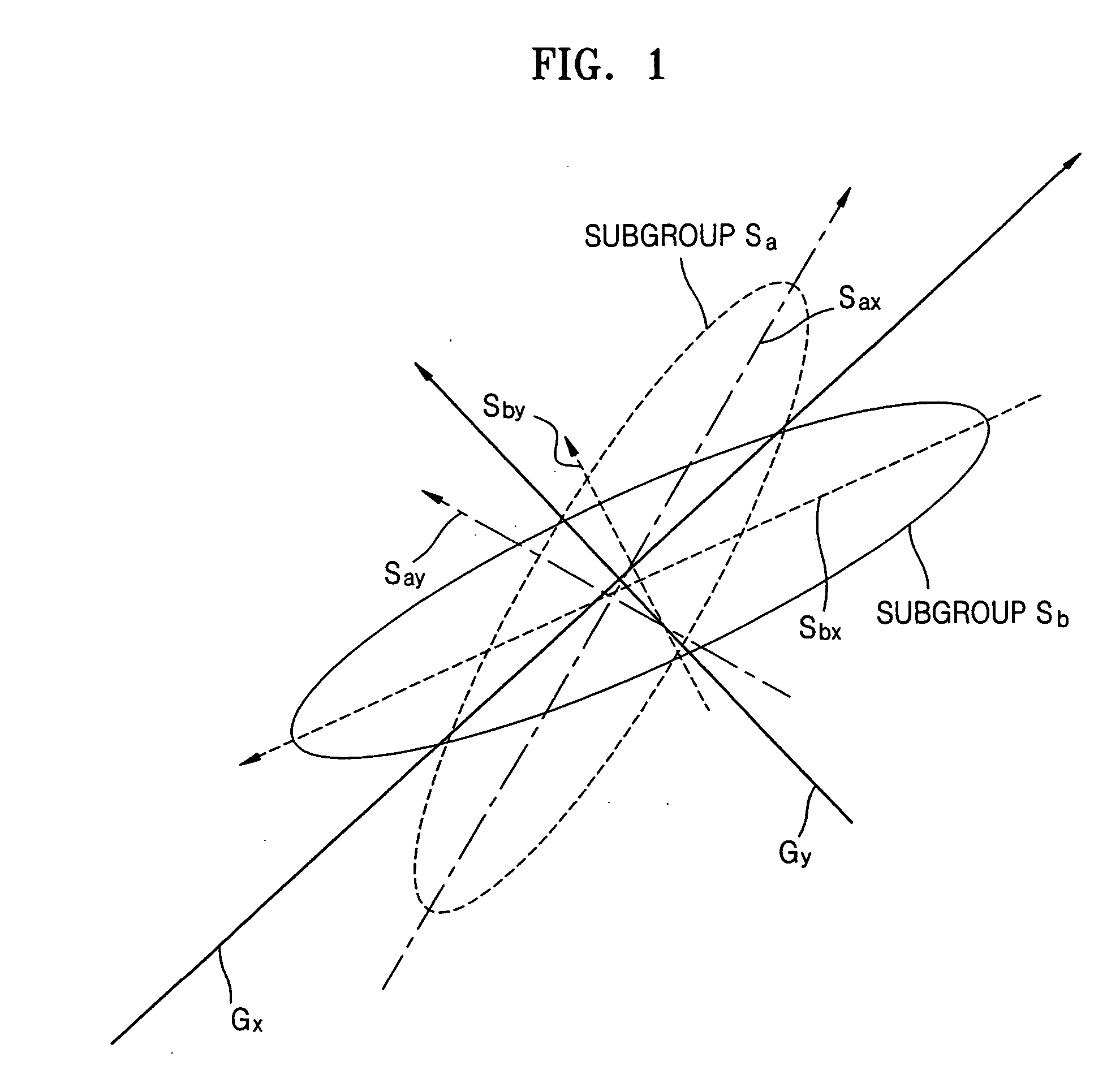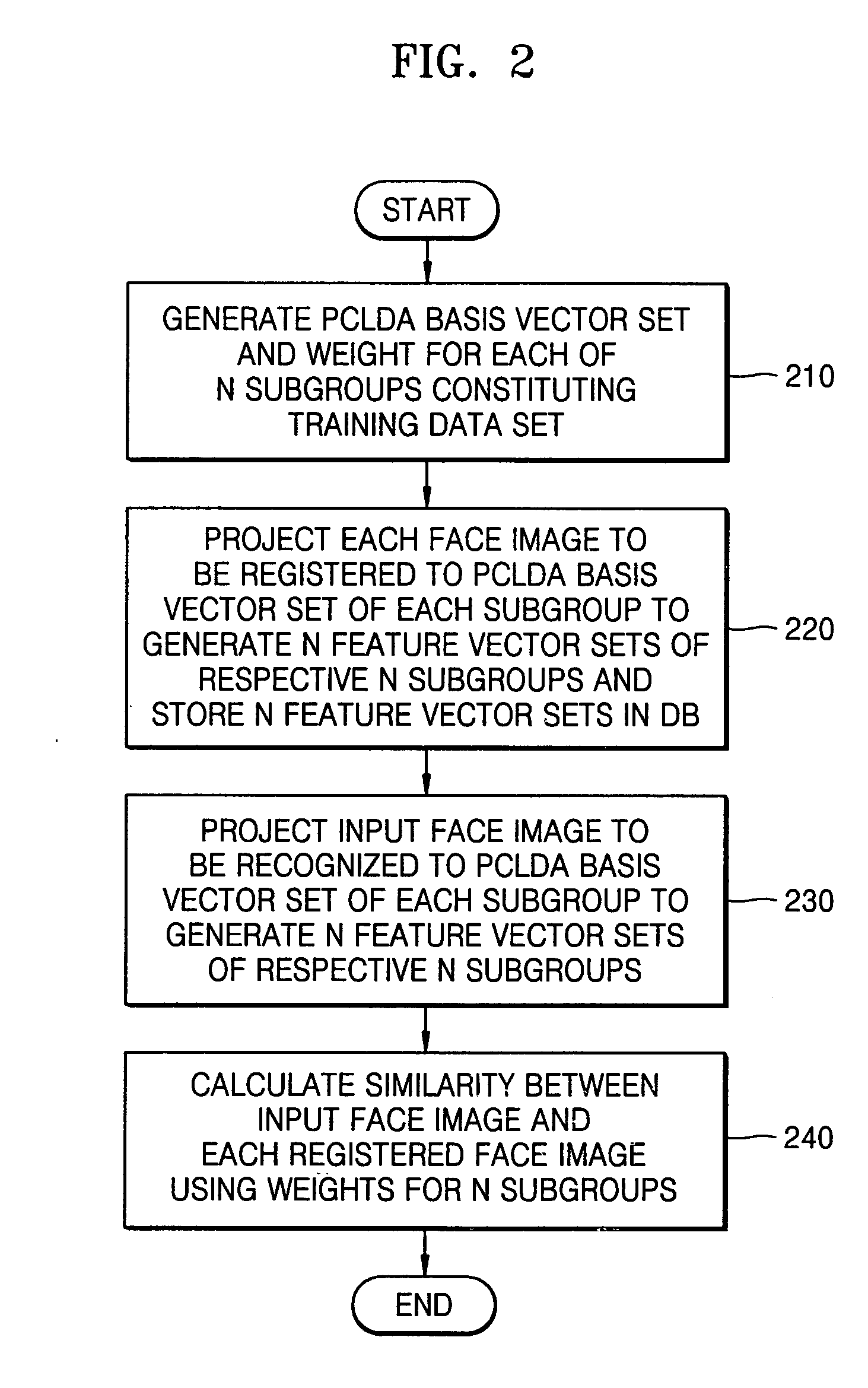Face recognition apparatus and method using PCA learning per subgroup
a face recognition and subgroup technology, applied in the field of face recognition, can solve the problems of complex computation within the svm, high complexity, and difficulty in classifying pose data or illumination data with respect to the same identity into the same class
- Summary
- Abstract
- Description
- Claims
- Application Information
AI Technical Summary
Benefits of technology
Problems solved by technology
Method used
Image
Examples
Embodiment Construction
[0027] Reference will now be made in detail to the embodiments of the present invention, examples of which are illustrated in the accompanying drawings, wherein like reference numerals refer to the like elements throughout. The embodiments are described below to explain the present invention by referring to the figures.
[0028]FIG. 1 illustrates global basis axes Gx and Gy generated by performing Principal Component Analysis (PCA) learning on an entire training data set and local basis axes Sax, Say, Sbx, and Sby generated by performing PCA learning on each of two subgroups Sa and Sb according to an aspect of the present invention. Referring to FIG. 1, the global basis axes Gx and Gy do not properly reflect different characteristics of the subgroups Sa and Sb. Here, the training data set may include only global face images or further include local face images.
[0029]FIG. 2 is a flowchart of a face recognition method according to an embodiment of the present invention. Referring to FI...
PUM
 Login to View More
Login to View More Abstract
Description
Claims
Application Information
 Login to View More
Login to View More - R&D
- Intellectual Property
- Life Sciences
- Materials
- Tech Scout
- Unparalleled Data Quality
- Higher Quality Content
- 60% Fewer Hallucinations
Browse by: Latest US Patents, China's latest patents, Technical Efficacy Thesaurus, Application Domain, Technology Topic, Popular Technical Reports.
© 2025 PatSnap. All rights reserved.Legal|Privacy policy|Modern Slavery Act Transparency Statement|Sitemap|About US| Contact US: help@patsnap.com



